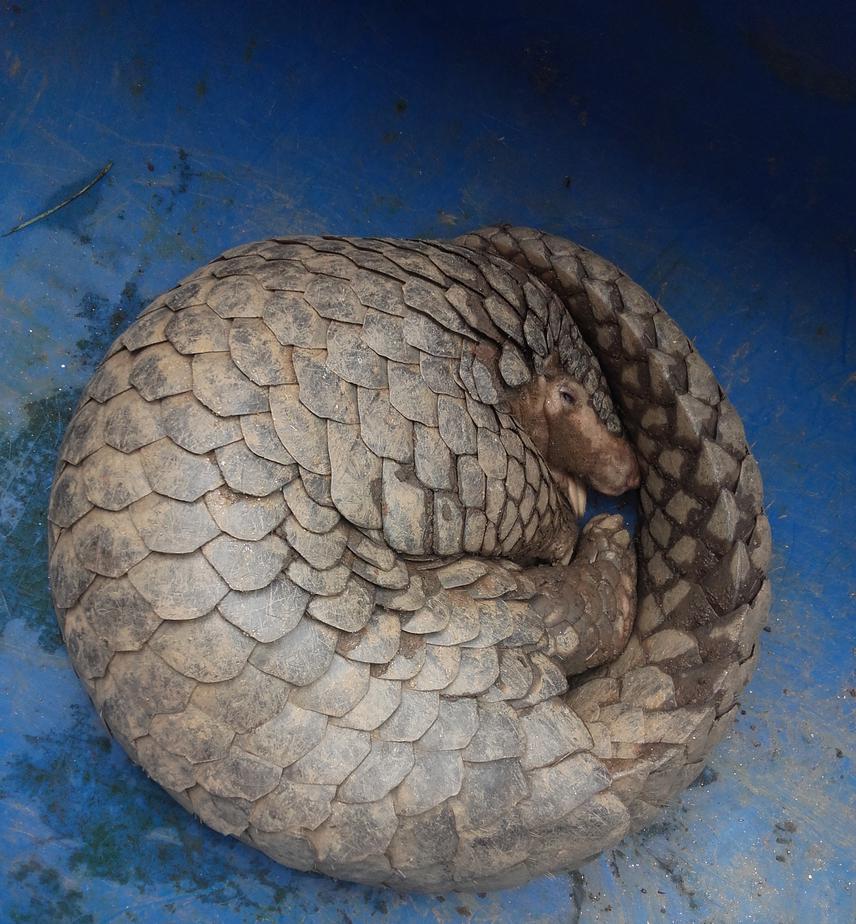Tshering Choki
The projects aim to build the distribution model to create awareness and to incorporate the Conservation program for Pangolins in the Dagachu Critical Watershed Management Plan (Hereafter, DCWMP), Central Bhutan through following two major activities:
• Systematic study of burrowing and foraging sites used by the targeted species (biotic and abiotic analysis of uses and non-used site).
• Assess the threats to the species from social survey (community perception).

Indian pangolin (Manis crassicaudata).
From eight Pangolin species extant in the wilds, Bhutan is supposed to harbour two pangolin, Chinese pangolin and Indian pangolin. Both of them are listed as critically endangered and endangered small mammals respectively in International Union for Conservation of Nature (IUCN) Red List of Threatened Species. Similarly, in Bhutan their habitat is restricted to few pockets of natural forest. The dwindling of Pangolins is attributed by habitat fragmentation and killing of animals linking to orthodox beliefs of bad omen in the region, and is increasingly threatened due to socio-economic activities.
Despite their threatened status globally, there exists a very little information on the distribution, current status and conservation threats of pangolin in current study areas. The lack of this basic information makes enacting a pangolin conservation plan in the species ranges difficult.
Therefore, the study will be conducted at the critical watershed areas of Dagachhu in Bhutan, involving the community of four counties via Gaserling, Goshi, Kana and Khebisa. This study will focus on Indian Pangolin (Manis crassicaudata) with aims to fill gap and enable conservation of pangolin in Bhutan through following objective/major activities of the projects:
1. Assess the habitats preferences and distribution of India pangolin in critical watershed areas of Dagachhu,
2. Assess the people perception towards Pangolins and conservation threats,
3. Incorporate the information gathered from objectives 1 & 2 to build habitats model for preparing the conservation action plan for Dagachhu Critical Watershed Management Plan (DCWMP).
The information obtained from the research will be baseline to initiate the long terms conservation and research program for Indian and other pangolin species in the region, especially the Chinese Pangolin.
The anticipated outcome of the research will have valid habitats and distribution model of Indian Pangolin and habitats categorization in the critical watershed areas. Information and responses on the conservation threats from systematic field survey and social perception survey will be available for immediate action planning for habitats protection and restoration activities, initiation of alternative livelihood supports for free agriculture seed, subsidised equipment/ incentives for those effected in conservation program. The main aim is to incorporate the pangolin habitats sites identified through social and scientific analysis in the management plan of DCWMP.